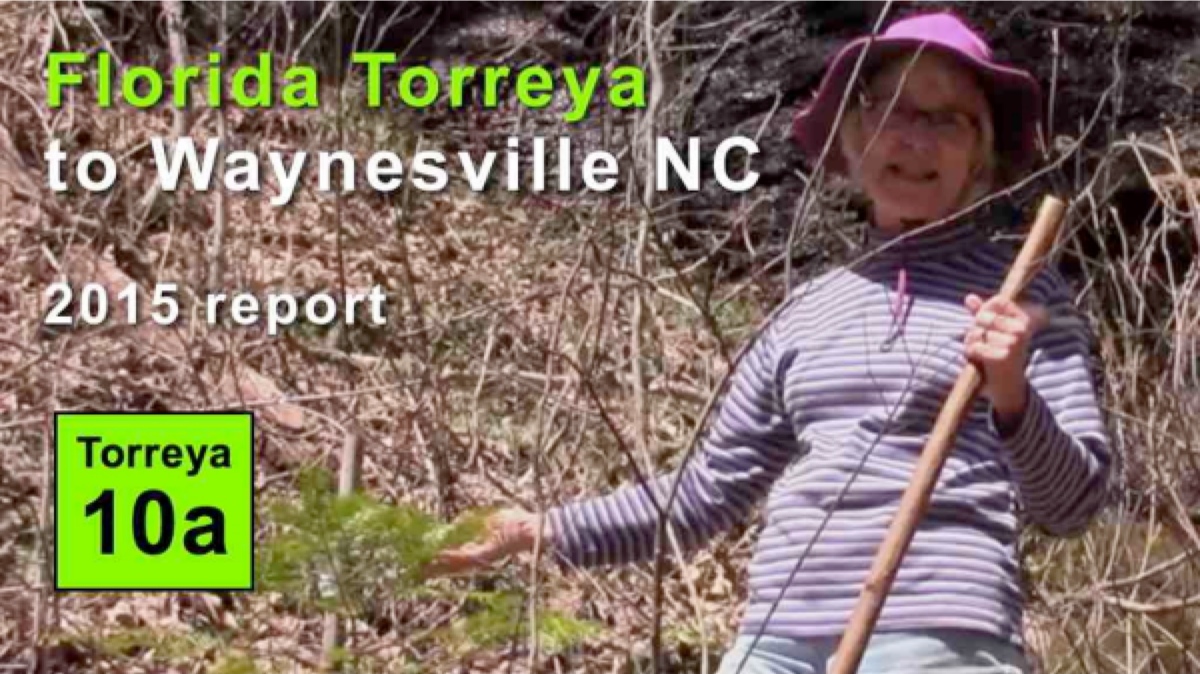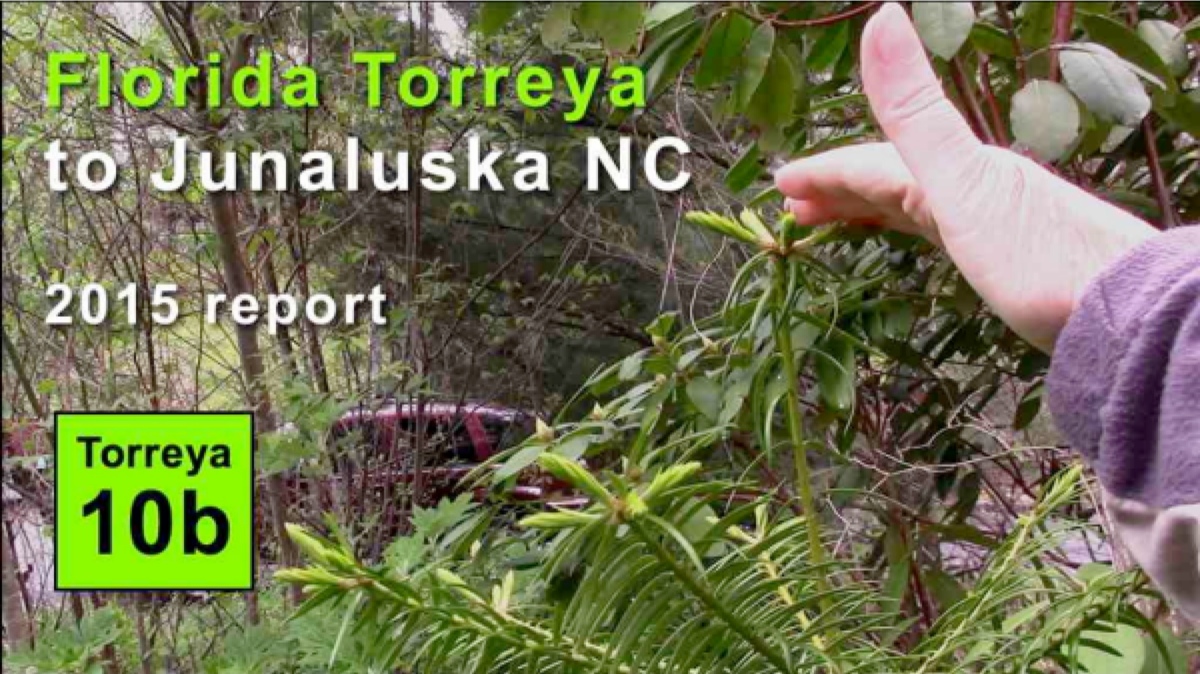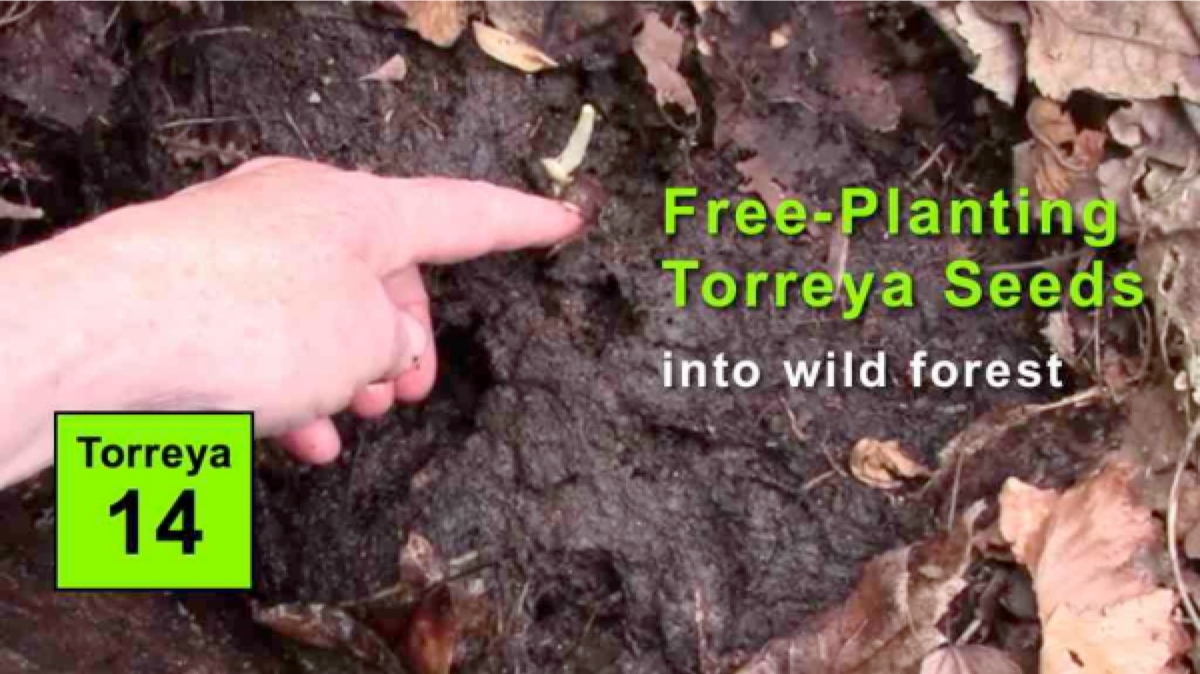(by Connie Barlow). On a site visit in late October, I saw that none of the 2011 seeds I had planted on the Evans property in May 2012 had visibly germinated yet.
Since I had with me approx. 200 seeds from the 2013 Torreya Guardians main seed harvest, and since I had planted the 2011 seeds onto the property with no protection against squirrels, I decided to use 43 seeds from the 2013 harvest to test 3 natural forms of squirrel protection: (1) buried beneath a fallen log; (2) protected by an overlay of thatched sticks and branches; and (3) covered by a large, flat rock I easily harvested from the streams on the property. I had no time to take photos of that effort, but the thatched-branch and flat-rock locations will be easy to see and monitor in future years.
Sara Evans, Janet Manning, and I also looked at the health of the seedlings still alive from the 2008 effort. We were pleased to discover that three plants on the dry eastern side of the property evidenced a spurt of new growth: all grew over the course of a very wet 2013 summer new basal stems from 8 to 10 inches tall. The three revitalized plants are: Johnny Appleseed, Charles Darwin, and Joanna Macy specimens.
SPRING 2015 UPDATE (by Connie Barlow)
VIDEO REPORT: Florida Torreya to North Carolina, 2015 progress report (Waynesville, NC)
 |
|
First video-documentation of fate of historic 2008 rewilding action of the endangered Torreya taxifolia from Florida to North Carolina. Connie Barlow films and narrates a survey of the 21 plants in wild forest on the slope of Eaglenest Mountain, near Waynesville. Most important results are both positive and negative, which help us ascertain the habitat preferences of this species (moisture, shade, slope, aspect). 54 minutes - filmed April 1, 2015.
|
VIDEO REPORT: FL Torreya to North Carolina (pt 2): 2015 progress report (Junaluska, NC).
 |
|
Second half of video progress report on our 2008 rewilding to North Carolina. Key findings include recommendations for measuring vigor, perils of cohabiting with rhodies, long-term negative consequences of planting root-bound conifers, the stress of seedlings needing to re-orient growth to wild light conditions. Note: The final 12 minutes of the video include the Waynesville findings in the comparative assessment.
45 minutes - filmed April 25, 2015.
|
VIDEO REPORT: Free-Planting Torreya Seeds into Wild Forest: 2015 best practices
 |
|
Preliminary results from the 43 seeds of the 2013 harvest that were "free-planted" on the Evans property near Waynesville confirm that planting beneath flat rocks and beneath a thatch of branches were both effective in deterring squirrels. However, the results are mixed for voles. 47 minutes - filmed April 24, 2015.
|